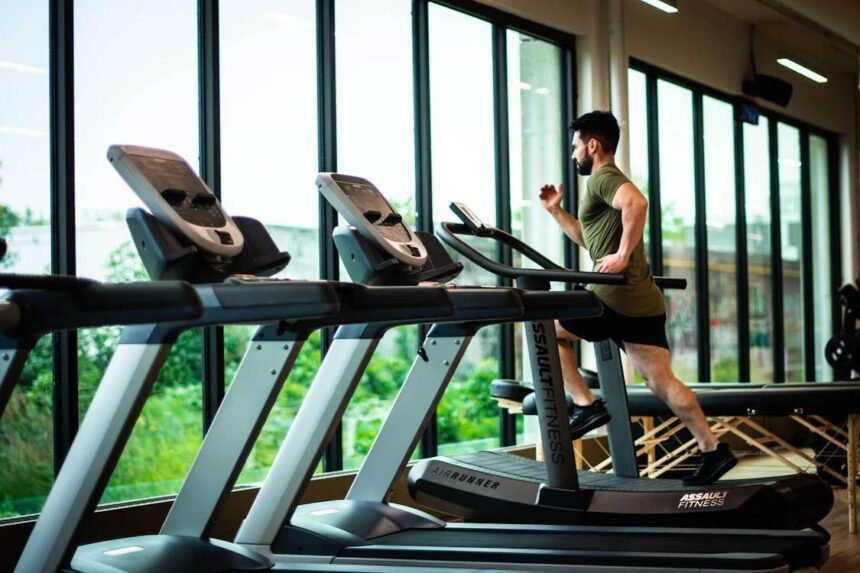Gym sessions are a key part of many people’s fitness routines, but what happens when the equipment you’re using is more dangerous than helpful? Faulty machines can turn a simple workout into an unexpected hazard, leading to injuries that may take weeks or even months to heal. While trainers and gym owners focus on teaching proper form and technique, the equipment’s condition often gets ignored.
Broken treadmills, malfunctioning weight machines, and defective cables can all pose serious risks. Many gym-goers are unaware of these dangers until it’s too late. Ensuring that equipment is well-maintained should be a top priority for any gym, but unfortunately, it’s often an afterthought.
Gitnux mentions that around 50% of gym injuries happen during weightlifting, with shoulder injuries making up a third of those. Lower back injuries are also common, accounting for 25% of all gym-related accidents. Treadmills, surprisingly, are responsible for 24% of these injuries, showing that even simple cardio machines can be risky.
In this article, we’ll explore the risks associated with malfunctioning gym machines and how they can unexpectedly transform fitness into a dangerous gamble.
The Hidden Dangers Lurking in Gym Equipment
Gyms are designed to be a safe environment for individuals to improve their physical health, but faulty equipment can pose hidden risks. Treadmills that suddenly stop, weight machines with jammed pulleys, or malfunctioning resistance bands can all lead to serious accidents. These incidents, though rare, are becoming more common as gym equipment ages or is not properly maintained.
ScienceDirect states that fitness has 1.8 injuries per 1,000 training hours, much lower than the 3.4 in other activities. Although fitness injuries may seem minimal, they still account for a significant number due to high participation rates. This underlines the need for injury prevention strategies to promote safer, healthier fitness practices.
When a machine malfunctions, the user is left vulnerable. A sudden stop on a treadmill can cause a fall, while broken weights can lead to muscle strain or more severe injuries. Unfortunately, many gym-goers are unaware of the dangers until it’s too late.
How often should gym equipment be inspected?
Regular inspections of gym equipment should occur monthly to catch any wear and tear early. However, if equipment shows signs of damage or usage irregularities, it’s crucial to inspect it more frequently. Timely maintenance and swift repairs reduce the chances of injuries and promote a safer environment for members.
Poor Maintenance: A Major Contributor to Gym Injuries
One of the biggest contributing factors to gym-related injuries is poor maintenance. A gym’s reputation is often built on the quality of its equipment, but regular servicing is frequently ignored due to budget constraints or oversight. Broken machines are sometimes left unattended for extended periods, increasing the likelihood of accidents.
From frayed cables on elliptical machines to rusty weight racks, these signs of wear and tear should not be taken lightly. Regular safety checks can mitigate the risk, but when gyms cut corners or don’t prioritize upkeep, the health and safety of members are compromised.
Trainerize notes that as a gym owner, it’s important to set aside $500 to $1,000 each month for equipment maintenance and repairs. Comprehensive insurance, including liability, property, and worker’s compensation, is essential to safeguard your gym against unexpected accidents or legal issues. Budgeting $3,000 to $10,000 annually for insurance coverage is a smart move to ensure protection.
How do gym injuries impact a person’s lifestyle outside of the gym?
Injuries from malfunctioning gym equipment can disrupt everyday activities, including work, social life, and household tasks. Recovery from such injuries often involves physical therapy, reducing mobility and productivity for weeks or even months. The mental toll of being unable to maintain a fitness routine can lead to stress and frustration.
How a Gym Injury Can Affect Your Life
Injuries from malfunctioning gym equipment can have long-lasting consequences. Depending on the severity, a person may experience anything from temporary soreness to chronic pain, muscle tears, or even fractures. Recovery often requires time off from work or everyday activities, leading to physical, emotional, and financial stress.
The injury may be so severe that it impacts a person’s ability to maintain their fitness routine or participate in daily activities. The mental toll of dealing with such injuries can also be substantial, leaving victims feeling frustrated, anxious, and disheartened.
According to TorHoerman Law, when the injury was caused by a faulty piece of equipment or poor gym maintenance, you should consider legal action. Personal injury lawyers specialize in assessing the damages caused by accidents like these and can help victims navigate compensation claims. They provide guidance on how to prove negligence, whether the gym was responsible for maintaining safe equipment, and how much compensation may be owed.
Derbyshire Times highlights that the County’s gym members are frustrated with frequent equipment breakdowns, despite extra council funding to cover rising costs. Long-time members say that machines have been out of action for months, affecting their fitness goals. Managers of the gym promise to fix the issues, but members question the management and the value for money.
Such scenarios often end up in accidents and injuries, leaving gym-goers vulnerable to the physical, emotional, and financial burden of recovery. When gym equipment fails or is poorly maintained, it’s not just an inconvenience, it can lead to serious, long-term health problems. Injuries from these incidents can require months of rehabilitation, physical therapy, and, in some cases, even surgery.
With the help of a personal injury attorney, gym-goers can ensure that their physical and emotional suffering is not overlooked. This also gives them the chance to recover financial losses related to medical bills, lost wages, and ongoing care.
What legal proof is needed to hold a gym accountable for injuries?
To hold a gym accountable, you’ll need to prove negligence by showing they failed to maintain safe equipment. This includes documenting the injury, gathering maintenance records, and showing the gym was aware of the faulty equipment. A lawyer can help gather and present these key pieces of evidence in your case.
The Role of Gym Policies in Preventing Accidents
Many gyms have policies in place to protect their members, including equipment usage guidelines and safety protocols. However, these policies are only effective if they are enforced consistently and if the equipment is regularly maintained. Some gyms provide members with instructional videos or guides on proper usage. However, this does not excuse the gym from its responsibility to ensure equipment is in working order.
Accidents can happen even with the best intentions in place, and gyms that fail to uphold safety standards may find themselves liable for damages. Understanding gym policies, and the level of care provided is essential for anyone concerned about gym safety.
How can gyms better educate members on safe equipment usage to prevent accidents?
Gyms can provide orientation sessions, signage, and online tutorials to help members understand proper usage techniques. Trainers should regularly remind users about safe practices and monitor for improper use. Establishing clear protocols for reporting malfunctions and unsafe equipment can prevent injuries caused by negligence or misuse.
Gyms are great for boosting physical health, but malfunctioning equipment can turn workouts into a dangerous gamble. To prevent accidents, gyms need regular maintenance, thorough safety checks, and educating members on proper equipment use. When gyms prioritize these, they create a safer environment where people can work out with confidence.
Gym-goers need to stay informed about potential risks and speak up if something seems off. We can all enjoy our fitness journeys without the worry of injury by fostering safer practices and being proactive. Let’s make sure our workouts stay safe and effective.
For More Information Visit Timelymagazine








